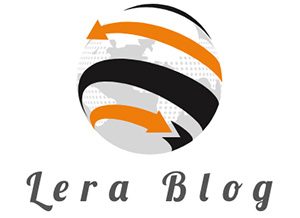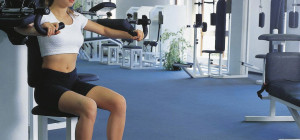What is Hygiene and Cleanliness?
Hygiene and cleanliness refer to practices that promote health and prevent disease, primarily through cleanliness. Hygiene encompasses behaviors such as handwashing, bathing, and maintaining a clean living environment, while cleanliness involves the absence of dirt, dust, and pathogens from surfaces and surroundings.
Historical Perspective on Hygiene
Historically, the understanding and practices of hygiene have evolved significantly. Ancient civilizations like the Egyptians and Romans practiced advanced forms of personal and public hygiene. The importance of hygiene became more pronounced during the 19th century with the advent of germ theory, which revolutionized public health.
Relevance of Hygiene in Modern Times
In today’s world, hygiene remains a cornerstone of public health. The COVID-19 pandemic underscored the importance of hygiene practices such as handwashing, sanitization, and use of sanitation towels. With the rise of antibiotic-resistant bacteria, maintaining cleanliness has become even more critical in preventing the spread of infections.
Importance of Cleanliness in Everyday Life
Cleanliness impacts every aspect of our lives, from personal well-being to community health. A clean environment reduces the risk of illness, improves mental health, and enhances the quality of life. It’s essential for creating safe and welcoming homes, workplaces, and public spaces.
Types and Categories
Personal Hygiene
Oral Hygiene
Oral hygiene involves regular brushing, flossing, and dental check-ups. It prevents tooth decay, gum disease, and bad breath, contributing to overall health.
Skin Care
Skin care includes daily cleansing, moisturizing, and sun protection. Proper skin care prevents infections, acne, and dermatitis.
Hair Care
Regular washing and grooming of hair prevent scalp infections and improve appearance. It’s essential for maintaining healthy hair and scalp.
Nail Care
Proper nail care involves regular trimming and cleaning to prevent fungal infections and maintain hand and foot hygiene.
Home Cleanliness
Kitchen Hygiene
Kitchen hygiene involves regular cleaning of surfaces, proper food storage, and waste disposal to prevent foodborne illnesses.
Bathroom Cleanliness
Maintaining bathroom cleanliness prevents mold growth, reduces the risk of infections, and ensures a hygienic environment.
Living Room and Bedroom Tidiness
Regular dusting, vacuuming, and organizing in living and bedroom areas promote a healthy living environment and reduce allergens.
Workplace Hygiene
Office Cleanliness
A clean office environment reduces the spread of germs, enhances productivity, and creates a pleasant work atmosphere.
Industrial Hygiene
Industrial hygiene practices protect workers from occupational hazards, ensuring a safe and healthy work environment.
Public Hygiene
Sanitation
Proper sanitation practices in public places prevent disease outbreaks and promote community health.
Waste Management
Effective waste management systems reduce pollution, prevent diseases, and maintain environmental cleanliness.
Public Transportation Cleanliness
Clean public transportation systems prevent the spread of infections and provide a safe travel environment.
Symptoms and Signs
Poor Personal Hygiene Indicators
Bad Breath
Persistent bad breath can indicate poor oral hygiene and underlying dental issues.
Body Odor
Unpleasant body odor is often a sign of inadequate bathing and personal hygiene.
Skin Infections
Frequent skin infections may result from poor hygiene practices, such as not washing hands regularly.
Signs of Unclean Environments
Pest Infestations
Pests like cockroaches and rodents indicate poor cleanliness and pose health risks.
Mold and Mildew
The presence of mold and mildew in homes indicates dampness and inadequate cleaning, leading to respiratory issues.
Accumulation of Dust and Dirt
Excessive dust and dirt in living spaces can trigger allergies and respiratory problems.
Causes and Risk Factors
Causes of Poor Hygiene
Lack of Education
A lack of knowledge about hygiene practices leads to poor personal and environmental cleanliness.
Poverty
Economic constraints often result in inadequate access to hygiene products and facilities.
Cultural Factors
Certain cultural practices and beliefs can influence hygiene behaviors and cleanliness standards.
Risk Factors Associated with Poor Cleanliness
Increased Disease Transmission
Poor hygiene and cleanliness increase the risk of spreading infectious diseases like flu, gastroenteritis, and COVID-19.
Allergies and Asthma
Dust, mold, and pests in unclean environments can exacerbate allergies and asthma symptoms.
Mental Health Issues
Living in cluttered, dirty environments can lead to stress, anxiety, and depression.
Diagnosis and Tests
Personal Hygiene Assessments
Self-Assessment Tools
Self-assessment questionnaires help individuals evaluate their hygiene practices and identify areas for improvement.
Professional Evaluations
Healthcare professionals can provide personalized hygiene assessments and recommendations based on individual needs.
Environmental Cleanliness Testing
Air Quality Tests
Air quality tests detect pollutants and allergens in the environment, indicating cleanliness levels.
Surface Swab Tests
Surface swab tests identify bacteria, viruses, and fungi on surfaces, helping assess cleanliness.
Water Quality Tests
Water quality tests check for contaminants, ensuring safe and clean water for consumption and use.
Treatment Options
Improving Personal Hygiene
Daily Routines
Establishing daily hygiene routines, such as regular handwashing and bathing, promotes good health.
Hygiene Products
Using appropriate hygiene products like soaps, shampoos, and disinfectants enhances cleanliness.
Professional Help
Seeking professional help from dermatologists, dentists, and other healthcare providers can address specific hygiene-related issues.
Enhancing Environmental Cleanliness
Cleaning Techniques
Effective cleaning techniques, including proper sweeping, mopping, and dusting, ensure thorough cleanliness.
Use of Disinfectants
Disinfectants kill germs and prevent the spread of infections, maintaining a hygienic environment.
Professional Cleaning Services
Hiring professional cleaning services ensures deep cleaning and maintenance of high hygiene standards in homes and workplaces.
Preventive Measures
Personal Hygiene Tips
Regular Hand Washing
Frequent handwashing with soap and water reduces the risk of infections.
Proper Oral Care
Brushing and flossing teeth regularly prevent dental problems and maintain oral hygiene.
Regular Bathing
Daily bathing removes dirt, sweat, and bacteria, keeping the body clean and healthy.
Maintaining a Clean Home
Daily Cleaning Habits
Incorporating daily cleaning habits, such as wiping surfaces and tidying up, maintains a clean living environment.
Deep Cleaning Schedules
Regular deep cleaning, including scrubbing floors and cleaning behind furniture, ensures thorough cleanliness.
Pest Control
Implementing pest control measures prevents infestations and maintains a healthy home environment.








